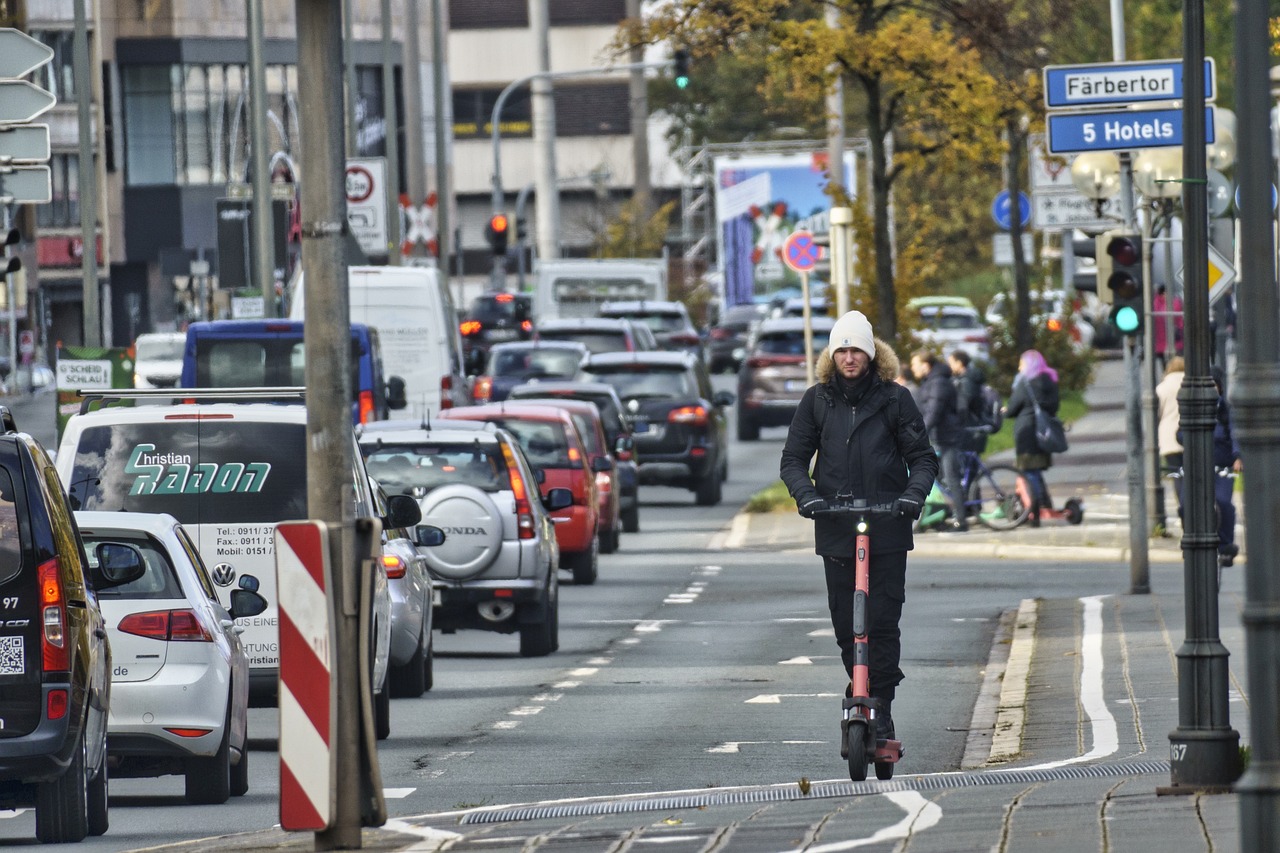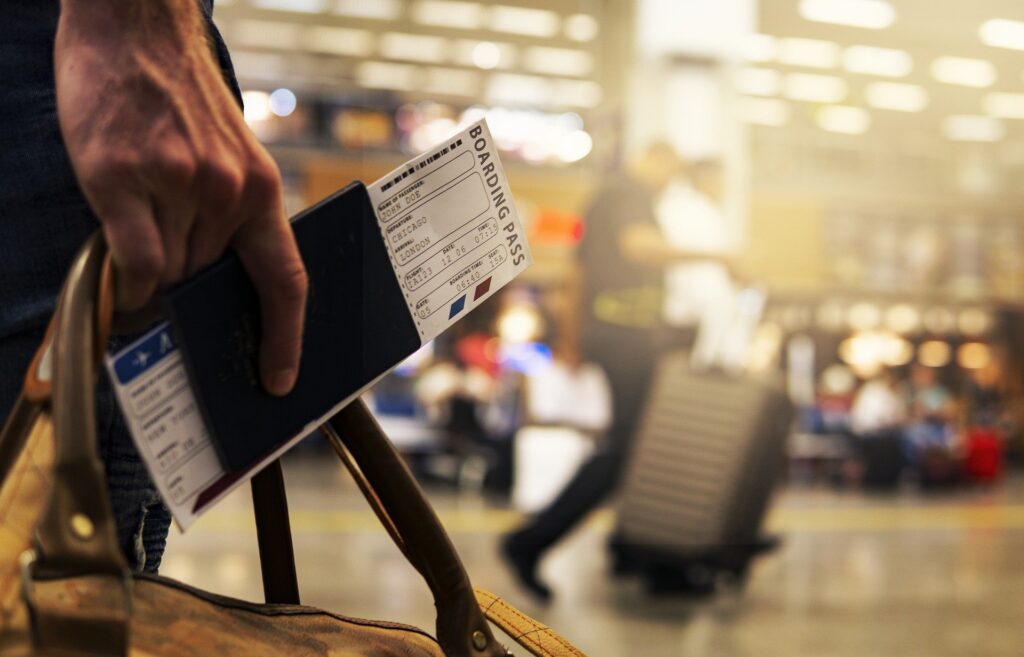E-scooters can be found in every city, in popular travel regions, and even in rural areas; they are becoming increasingly common. They can be rented quite easily or bought for little money. What should you look out for, and what are the regulations for drivers of e-scooters? We have answers to some frequently asked questions.
What is an e-scooter?
An electric scooter is an electrically powered small scooter with a maximum permissible power of no more than 600 watts and a design speed of no more than 25 km/h.
Where is it allowed to ride?
The traffic regulations applicable to cyclists must be observed. In particular, the obligation to use bicycle facilities applies accordingly.
- Roadway
The carriageway intended for vehicle traffic may be used if there is no bicycle facility. If there is a bicycle lane, footpath, or bicycle path without compulsory use, this or the roadway may be used.
- Cycle track
If a bicycle lane with compulsory use exists, it must be used.
- Cycle lane
Bike lanes are traffic areas separated from the rest of the roadway by markings and are used with e-scooters.
- Multi-purpose lane
A multi-purpose lane is a separated part of a – relatively narrow – traffic lane, which cyclists and wide motor vehicles may use if they cannot manage with the main traffic lane.
- Cyclist crossing
Bicycle crossings are used to cross a bicycle facility over the roadway and must be used.
- Bicycle lane
The use of bicycle lanes with e-clinch scooters is permitted.
- Sidewalk and bicycle lane
Endangering or obstructing pedestrians and cyclists is prohibited. Only the part intended for cyclists may be used on a sidewalk and bicycle lane separated by a barrier line.
- Residential streets and pedestrian zones
The speed must be adapted to pedestrian traffic in residential streets and meeting zones. If there is a sidewalk, it may also be used here only if the authority has allowed this by way of exception.
Where is it not allowed to drive?
Not usable traffic areas:
- Sidewalks
Driving on sidewalks is prohibited.
However, the competent authority may permit driving on sidewalks. If this is the case, however, these traffic areas may be driven on at maximum walking speed. The announcement of such an exception is made on the official notice board; the municipality can also provide further information. A separate traffic sign is not provided.
- Crosswalk
It is forbidden to drive on protective paths to cross the roadway.
- Pedestrian zone
Riding in pedestrian zones is generally prohibited. However, if cycling is permitted, e-scooters may also be used in pedestrian zones, but the speed must be adapted to the speed of pedestrian traffic.
What is the speed limit?
An e-scooter may be driven at a maximum speed of 25km/h.
Two people are allowed to ride the e-scooter?
A second person is not allowed to ride on the e-scooter – it is prohibited. Only one person can ride anytime, regardless of age or size.
Are children allowed to ride the e-scooter?
Children cannot ride on the e-scooter.
If you are looking for an alternative to a car, an e-bike for transporting children is a good choice.
At what age is it allowed to drive?
From 12, or 10, or 9, with a bike pass.
Children under 12 are not allowed to ride alone on public roads (except on residential streets) and must be supervised by someone at least 16 years old.
Children under 12 must wear a helmet when riding.
Can I drive an e-scooter while intoxicated?
For drivers of e-scooters and e-bikes, the legal alcohol limit is under 0.8 per mille. However, it is also best to stick to the motto “Don’t drink and drive!” for safety.
Where can the e-scooter be parked?
E-scooters, like bicycles, must be parked so that they “cannot fall over or obstruct traffic.”
Am I allowed to make phone calls on the e-scooter?
The following applies to both e-bikes and e-scooters: making phone calls without a hands-free device while driving is forbidden.
Do I need insurance for my e-scooters?
No, e-scooters do not need insurance in Austria. But it is important to clarify whether your scooter is covered by private liability insurance, e.g., in connection with household insurance so that damage caused by it is covered.
What equipment does a roadworthy e-scooter need?
Electric scooters must be equipped with an effective braking device: white reflectors or reflective sheeting to the front, red reflectors or reflective sheeting to the rear, yellow reflectors on the side
Accident with the e-scooter – what to do? In case of darkness and poor visibility, white light to the front and red rear light.
In case of an accident with injured persons:
Secure the accident site
Get help and notify the police
Provide first aid
Ask witnesses to help clarify the situation
In the event of a hit-and-run accident:
Contact the insurance association. In the case of e-scooters, the warranty fund must step in.
In case of property damage:
Secure the accident site
Ask witnesses to help clarify the facts of the case.
Call the police only if it is impossible to exchange the data of the persons involved (e.g., no identification).
Secure traces and take accident photos of the surroundings and the damage, but always with visible surroundings (other traffic areas, traffic signs, ground markings, etc.)
Contact household insurance and deliver an accurate accident report
Can the e-scooter be taken on public transport?
The transport company’s subsidy regulations apply here. It may be regulated under which conditions it is allowed to be taken along. Tip: To avoid liability, care should be taken to ensure that the scooter does not endanger other passengers, even if transport is permitted.
- source: oeamtc.at/picture: Bild von Manuel Alvarez auf Pixabay
This post has already been read 5193 times!



